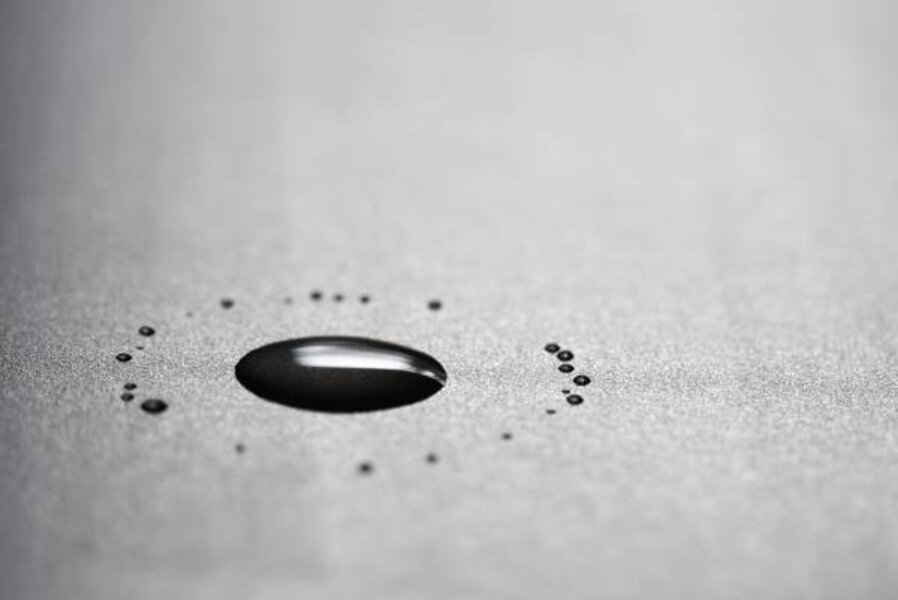Gray water in the garden: Economical and ecofriendly
Loading...
I first used gray water in the 1960s before I even had a term for it. (Even now we seem to be divided on spelling — gray vs. the English grey.) Back then it was whatever had little soap and could be collected in buckets and hauled to the sprawling vegetable garden I helped create in the northern California countryside.
During those dry summer months, our two families’ potable water needs were met with the contents of an 18-foot-tall redwood water tank, replenished each winter from a seasonal spring. We had no water to spare for laundry — we toted that to the nearest town — or even toilets. In the dry months, we used an outhouse. Of course, there was nothing for our burgeoning veggies, except what we recycled and hauled to the crops.
The dry days
Two weeks ago I was reminded of those summers when I met up with Paul Morgan at the Southeastern Flower Show in Atlanta. I had been invited to speak at the show, and on the last day I cruised the floor for any displays and booths I might have missed earlier.
Along the back wall, Paul featured the newest innovations for handling gray water. His company, Rainharvest, has responded to the growing consumer awareness of just how finite our freshwater resources are.
The recent flooding notwithstanding, Georgia’s seven drought years left a lasting impression on residents. I had missed Paul’s booth earlier because showgoers were often three deep there, checking out the plastic tank, about the size of a large water heater, with a filtration device fitted to the top. This was a small version of what could be installed for a whole home.
By gathering gray water and sending it to holding tanks where it is filtered and then piped into drips systems in the garden, recycled water can be part of every gardener’s picture. I liked the idea that tanks like this could be buried under driveways and parking pads, thus not disturbing the roots of established plantings.
And if the pads are made of a permeable paving — see my last post — rainwater can be collected, too.
Free water research
Hauling our gray water back in the day, we didn’t know about the worries of phosphates and stray bacteria, or how the water should be handled by piping it underground only — all things that have since been legislated into the use of gray water around the United States. Most municipalities have a myriad and byzantine set of regulations.
For instance, according to the Colorado State Extension website, rainwater collection in Colorado is preferable to gray-water collection, and everything must be installed by licensed plumbers. So, can you use gray water there or not?
That’s just the beginning. Because recycling water involves dealing with one of the largest items you will ever purchase — your home — you need to thoroughly investigate your options, especially if you are considering a DIY design for your system. Fortunately, plenty of solid information — and some loopy advice as well, so buyer beware — is out there on the Internet.
Saving money on water
Is recycling water worth it? In those long-ago dry summers, the price of carrying buckets was laborious sweat-equity. Now it costs considerably more to put in a new system or retrofit a home. However, Paul says a homeowner can save huge amounts of money normally spent on watering gardens. Add rain roof collection to the system, and you can take advantage of that available water, too.
The other expense is an environmental one that tends to be hidden from the economic bottom line. Any installation today will pay off in the future when fresh water begins to reflect its actual value as an extraordinarily precious resource.
According to Steve Solomon in his iconic book, "Water," the world’s fresh water supply is only 2.5 percent of all water, with less than three-tenths of 1 percent on the earth’s surface. Of that, rivers and streams make up the hard-to-grasp figure of six-thousandths of 1 percent.
In other words, we’re all living with a redwood water tank.
Mary-Kate Mackey is one of eight garden writers who blog regularly at Diggin' It. She is co-author of “Sunset’s Secret Gardens — 153 Design Tips from the Pros” and contributor to the “Sunset Western Garden Book,” writes a monthly column for the Hartley Greenhouse webpage and numerous articles for Fine Gardening, Sunset, and other magazines. She teaches at the University of Oregon’s School of Journalism & Communication. She writes about water in the garden for Diggin’ It.
-----
Follow us on Twitter and Facebook.
To read more by Mary-Kate, click here. The Diggin' It blog archive has everyone's posts (scroll down]. The Monitor’s main gardening page offers articles on many gardening topics. See also our RSS feed. You may want to visit Gardening With the Monitor on Flickr. If you join the group (it’s free), you can upload your garden photos and enter our next contest.





